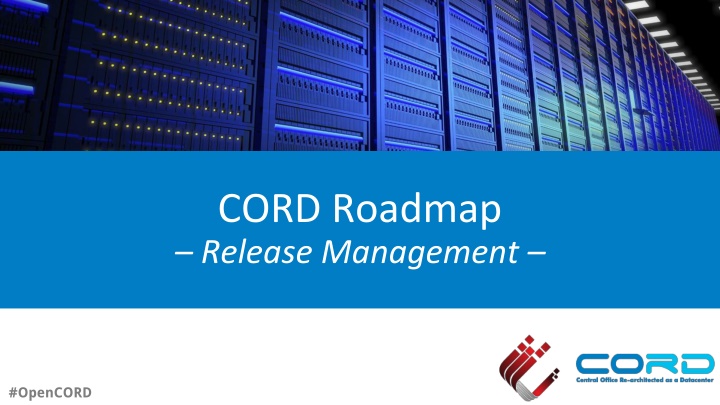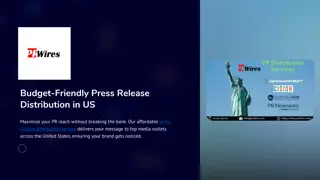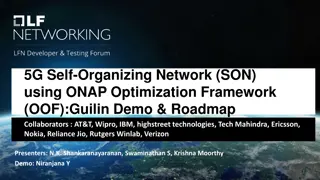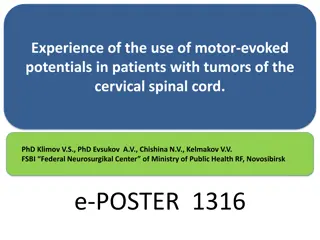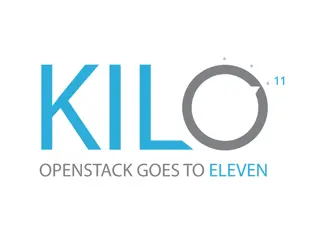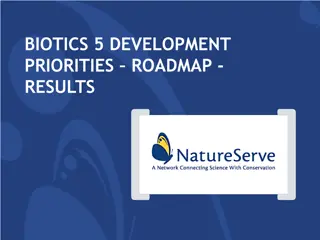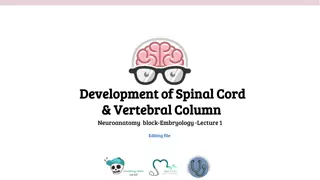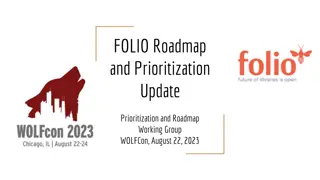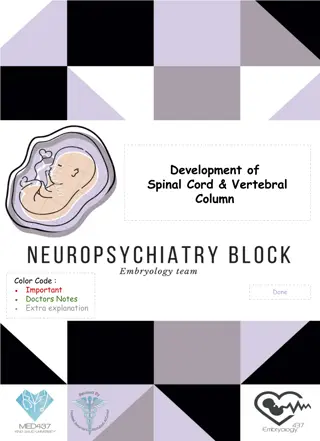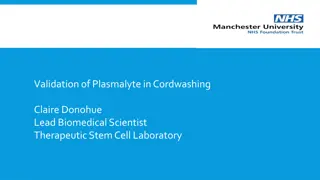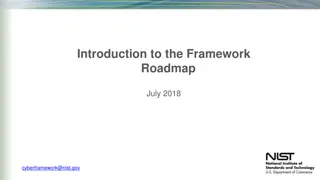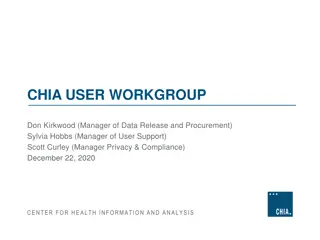CORD Roadmap & Release Management
In the world of open-source CORD (Central Office Re-architected as a Datacenter), follow a structured release management approach with defined implementation timelines and detailed component inclusions. Experience a journey from short-term release plans to priorities for future development, focusing on stability, service portfolio expansion, and operational enhancements. Explore the shift towards a distribution model and ongoing advancements like multi-access edge cloud integration and proof-of-concept trials.
Download Presentation

Please find below an Image/Link to download the presentation.
The content on the website is provided AS IS for your information and personal use only. It may not be sold, licensed, or shared on other websites without obtaining consent from the author.If you encounter any issues during the download, it is possible that the publisher has removed the file from their server.
You are allowed to download the files provided on this website for personal or commercial use, subject to the condition that they are used lawfully. All files are the property of their respective owners.
The content on the website is provided AS IS for your information and personal use only. It may not be sold, licensed, or shared on other websites without obtaining consent from the author.
E N D
Presentation Transcript
CORD Roadmap Release Management #OpenCORD
Reference Implementation When is the reference implementation released? Four-month cadence: January / May / September Mid-cycle support branches (e.g., 3.0.1) Mid-cycle services branches (e.g., 4.1) What s officially included in each release? Platform: XOS, Build System, ONOS (Fabric, VTN), OpenStack Set of Service Profiles: R-CORD (only solution included through 4.0) Moving towards a CORD Distribution Model 5.0 will be the 5threlease of the distribution Components will be versioned independently
Short-Term Release Plan M-CORD ? MAE E-CORD R-CORD 1.0 5.0 2.0 3.0 4.0 4.1 (Dec-2017) R-CORD VOLTHA
Priorities Going Forward CORD 4.0 stabilized service developer interfaces Next Build out CORD s service portfolio Upgrade all current R/E/M-CORD services to the 4.0 API Integrate latest access peripherals VOLTHA and xRAN Expand service portfolio to include micro-services Kubernetes On-Board other VNFs into CORD ONAP Streamline service on-boarding based on experience
Priorities Going Forward CORD 4.0 refactored build system to improve developer workflow Next Exploit flexibility to improve operator workflow Automate the build-and-install process for physical PODs, including discovery and configuration of the POD switching fabric Make it easy to specify (and change) service profiles independent from configuring the underlying platform Improve lifecycle management capabilities to include in-service- software-upgrade of the CORD control plane Demonstrate how CORD can leverage available infrastructure rather than require that a POD be build on top of bare metal
Near-Term Drivers (Deliverables) Multi-Access Edge Cloud R/E/M-CORD Services running on the same platform Includes VOLTHA and xRAN access peripherals Managed White-Box OLT Includes VOLTHA Light-and-Right R-CORD (Kubernetes-based) Includes OSAM (Open Source Access Manager) Integrate CORD and ONAP Use Case 1: OSAM Use Case 2: E-CORD / MSO Use Case 3: A-CORD / DCAE
From PoC to Trial Proofs-of-Concept ? Field Trials
From PoC to Trial Proofs-of-Concept / Domain-Specific (e.g., M-CORD ) About Possibilities Integrate Curated by TST Integrated Supported CORD Reference Implementation Customize Field Trials / Operator-Specific (e.g., NTT, DT, ) About Reality
From PoC to Trial Proofs-of-Concept / Domain-Specific (e.g., M-CORD ) About Possibilities Integrate Curated by TST Integrated Supported CORD Reference Implementation Customize Field Trials / Operator-Specific (e.g., NTT, DT, ) About Reality
From PoC to Trial Proofs-of-Concept / Domain-Specific (e.g., M-CORD ) About Possibilities Integrate Curated by TST Integrated Supported CORD Reference Implementation Customize Field Trials / Operator-Specific (e.g., NTT, DT, ) About Reality
Build System Roadmap Improved Development Workflow Easier debugging ElasticStack & structured logging Easier to develop use cases Decouple profiles from platform Improved Operator Workflow Fast, foolproof install process Install all containers from Docker Hub onto K8S Install a generic CORD system, use dynamic service onboarding Modular, flexible CORD Use existing infrastructure (e.g., OpenStack, provisioned nodes) Exchange pieces of the system (e.g., K8S for OpenStack) Discover and configure the fabric PoC script to bootstrap the fabric at install time (QA) Fabric configuration based on XOS models Support DB migration
Container Orchestration Roadmap Deploy CORD platform components using k8s OpenStack XOS ONOS/ONOS Apps Support Container-based VNFs using k8s Common overlay network between OpenStack VMs and Docker Containers Hybrid VM-Container service platform Demonstrate Light-and-Right CORD configuration Run a configuration with k8s but no OpenStack
XOS Roadmap Improved Support for Developers Static Analysis for services and manifests Simple Synchronizer template, with most code auto-generated Unit test framework for new Model Policies & Sync Steps Dynamic service on-boarding Improved Synchronizer performance Improved performance from XOS core API Auto-generated test coverage to include end-to-end tests
XOS Roadmap Improved Support for Deployment Engineers Better contextual tracing and debugging support Better upgrade support, including automatic DB migration Dynamic service on-boarding Model Policy framework that is free of race conditions Enforce Interface models between Service Instances Cleaner visualization of the service graph Hide platform level service Filter by subscriber Display synchronization status
Trellis Roadmap Dual-homing (released 1.11.1) fixes for known issues Pseudo-wire support Initial QoS support (supporting network slicing) IPv6 additional features DHCPv6 relay additional features (contributed by Nokia) IPv6 Multicast (contributed by Nokia) V6 Router Advertisement app (contributed by Infosys) Support for New ASICs & Bare-metal switches Broadcom Qumran (QMX) Cavium Xpliant Quanta switches (QCT LY8) Barefoot Tofino using P4 (not in 1.12 release)
QA Roadmap Expand test coverage to include M-CORD and E-CORD Extend automated tests to more fully exercise the platform Functional regression tests Black box tests to make sure base components have not regressed End to end CI/CD tests To make sure a system can be built from scratch, deployed, and can pass a baseline of tests for both control and for traffic. Performance tests So can track performance over time Build out performance automation framework Populate framework with a few baseline performance tests
R-CORD Roadmap Integrate VOLTHA into R-CORD Continue to improve white-box EdgeCore OLT adapter functionality in VOLTHA Explore offloading of some VNFs into hardware Fast-path where traffic remains in the hardware, only go out to VNF services when you need them Leverage P4-compatible hardware that is now available E.g. QoS done in switches rather than vSG Work towards multi-access edge: combined deployments of R-CORD and M-CORD
E-CORD Roadmap Services, Services, Services E.g., firewall, WAN accelerator, encryption, ... Open and closed source versions ONAP Integration Replace Global XOS with ONAP Multi-Access CORD {R,E,M}-CORD service chains co-existing in the same pod Device Integration CPE Ethernet Edge
M-CORD Roadmap Integrate xRAN enhancements into the CORD Platform Expand open source availability of NGIC Continued SDN ization and Disaggregation of 3GPP RAN CORE 3GPP Control Plane 3GPP User Plane Network Control Plane Network Data Plane
A-CORD Roadmap Upgrade all current A-CORD services to the CORD 4.1 release Integrate P4 INT enabled Trellis to A-CORD Integrate A-CORD and ONAP DCAE including VNF onboarding alignments Move from unstructured to structured telemetry data combining data models from OpenConfig, VES and ETSI Create an hierarchical multi-collector architecture with dynamic collector and probe instantiations Create a programmable SD Collector architecture along with SD-Collector development guidelines and SD Collector SDKs. Create vProbe development guidelines and vProbe SDKs
